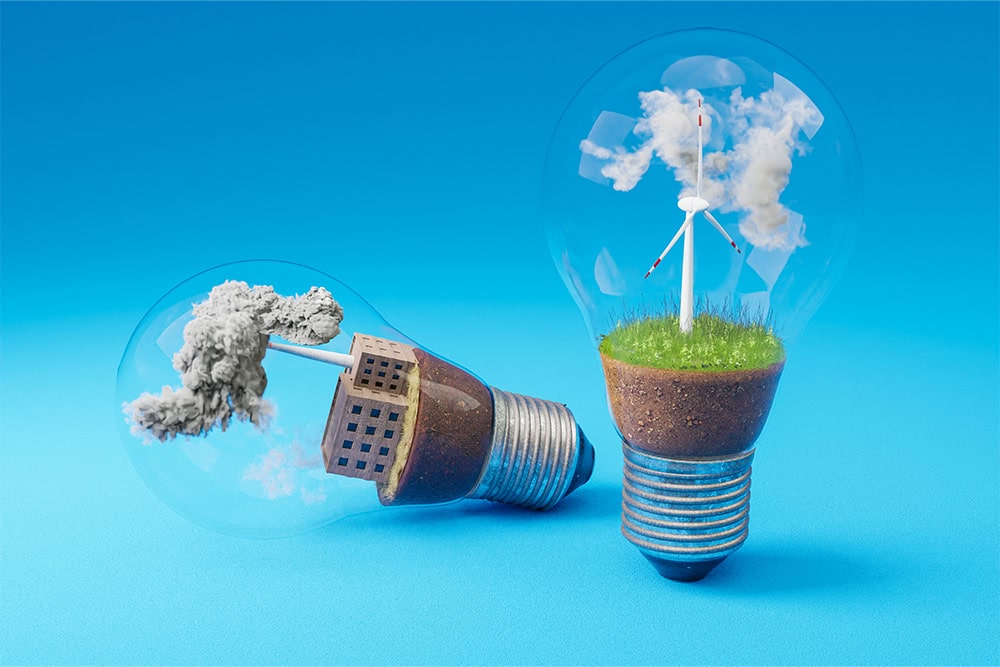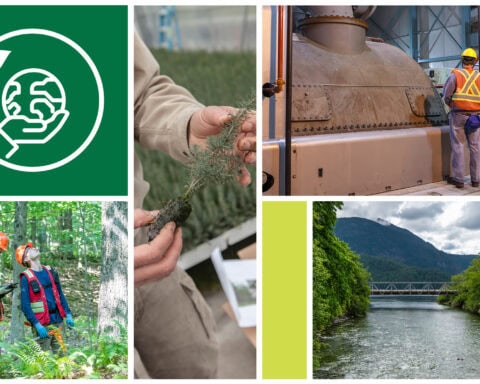The world is inching ever closer to 2050, the target date set in Paris in 2015 for countries to reduce their emissions to net-zero. While some still believe that this goal is attainable, cutting carbon may be more gradual than many might expect. That’s especially true today as three new forces – inflation, deglobalization and changes in clean tech investments – are impacting the energy transition in new ways.
That’s according to John Cook, senior vice president, portfolio manager and co-lead of the Mackenzie Greenchip Team, which runs the $2.7 billion Mackenzie Greenchip Global Environmental All Cap Fund. While we’re only at the start of the energy transition, with the International Energy Agency saying that US$4.5 trillion must be invested annually in clean energy by 2030. Now’s the time for investors to take a close look at this market and turn these forces facing the shift to carbon-neutral into opportunities. “If we want to maintain our current way of life, we have to transition – fossil fuels will be increasingly hard to find and also increasingly costly – both in environmental and economic terms,” he explains. “Our future will increasingly be electrified.”
Higher rates alter opportunities
There are some key challenges impacting the transition, but the most immediate issue is arguably the higher-for-longer interest rate environment. Until central banks started raising rates in 2022, energy investments were booming. Annual investments into clean energy nearly doubled over the past decade, while global sustainable bond issuance was on track to hit US$950 billion in 2023. “Low interest rates,” Cook notes, “accelerated the transition.”
Not surprisingly, higher interest rates have had the opposite effect, causing write-downs, penalties and exits for renewable developers. One notable casualty of higher rates is Danish multinational energy company Orsted, which recorded a US$5.6 billion write-down on two offshore wind developments last year.
“Near-zero rates created economic distortions,” says Cook, adding that investors fixated on low capital business models, pouring money into companies that don’t make physical things. “There was little interest in financing new mines or manufacturing capacity.”
That will likely change. High rates encourage savings, which leads to greater capital formation and, in turn, more capital investment. “Higher for longer is likely a long-term blessing that will create a near-term bump for the energy transition.”
Reconsider supply chains
China’s near-total dominance over the electric vehicle (EV) market is another challenge, as protectionist attitudes are threatening to slow down the transition. Today, China manufactures 66% of all batteries sold in the world, and it has even more control over battery components. The country also controls between 60% and 95% of manganese, cobalt, graphite, lithium, and nickel – critical minerals in the energy transition.
North America needs these minerals and components if it’s going to meet its net-zero goals, but it can’t rely on China, which wants these commodities for itself. The solution? Deglobalization – at least when it comes to transition-related products. “This might help us rebuild more resilient supply chains and in time, create a more even transition,” says Cook.
However, it will take time to build home-grown supply chains. In the meantime, North America may want to consider importing Chinese-made EVs, says Cook. Chinese EVs saw sales climb from nothing to 13% of the auto market in one year in Germany, largely because their Tesla Model 3–like car was half the price of the real deal. “The West could arguably transition faster by importing less-expensive Chinese cars,” says Cook.
Invest in incremental change
Over the years, the cleantech industry has made bets on disruptive technologies, such as nuclear fusion, to help solve the climate crisis. But investors are now questioning whether they’ve put their time and money in the right places. “That’s a good thing,” says Cook. “The sooner investors acknowledge a technology can’t work, the sooner capital can be allocated to solutions that do.”
While Cook thinks there is still a place for governments, academia, and venture capital to fund grand projects, he’s found that the most powerful advances have been incremental rather than transformative. For instance, over the past decade, an estimated 80 billion incandescent lightbulbs have been replaced with LEDs, cutting lighting-related energy consumption by 80%. While incremental changes may seem exciting, allocating capital to the right projects will help speed up the transition.
Energy transition-related investments will likely be volatile as we continue on the path to net zero, but there will still be plenty of promising opportunities for patient investors. For Cook, taking a long-term perspective is key. “We invest with the goal of building assets that will provide a productive return over decades,” he says. “That means finding value, paying the right price, understanding risks, and being patient.”
Disclaimer:
Commissions, trailing commissions, management fees, and expenses all may be associated with mutual fund investments. Please read the prospectus before investing. Mutual funds are not guaranteed, their values change frequently, and past performance may not be repeated. The content of this article (including facts, views, opinions, recommendations, descriptions of or references to products or securities) is not to be used or construed as investment advice, as an offer to sell, or the solicitation of an offer to buy, or an endorsement, recommendation or sponsorship of any entity or security cited. Although we endeavor to ensure its accuracy and completeness, we assume no responsibility for any reliance upon it.
This article was provided by Mackenzie Investments for commercial purposes.





